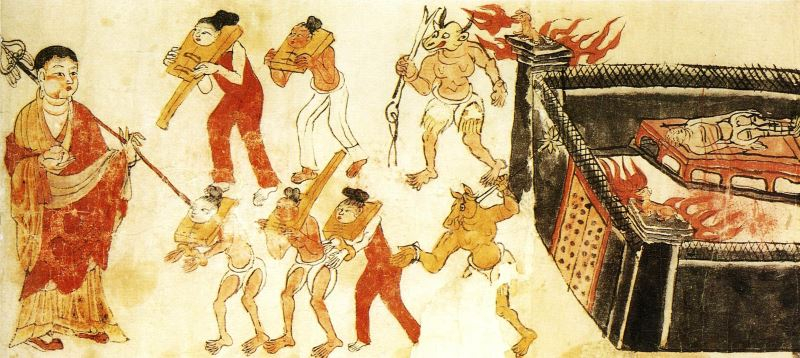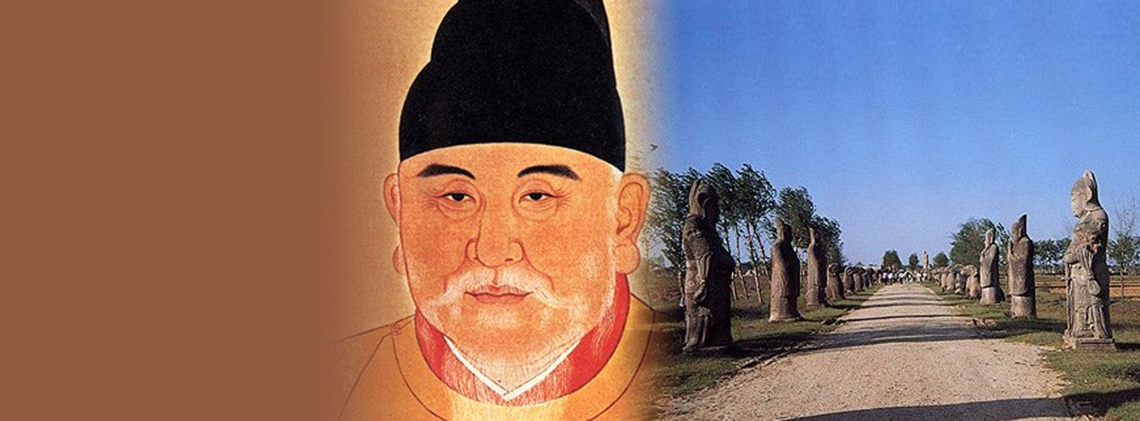
Chinese Funerary Customs
Splendid
Chi Culture
Topic
Chinese Funerary Customs
Chinese funerary customs may be divided into those for mourning (i.e., the relevant rituals for the deceased) and those for burial (which may take other forms than interment). There is a great variety among funerary traditions in China, each with its own unique features. These variations and features are attributable to group and religious beliefs as well as geographical environments.
Although rituals varied throughout history, the values they embodied remained relatively stable for thousands of years. Traditional society in China paid more attention to funerals than to any other ritual. There were a number of activities that made up funerary customs, such as bathing the body of the deceased, dressing the deceased, transferring the body to the funeral hall, notifying the ancestral temple, publishing the obituary, distributing the funerary apparel and staffs, receiving the coffin, moving the deceased to the coffin, displaying the coffin in the hall, lamenting and sacrificing, keeping vigil at the hall of the soul, making the funeral procession, interring the body, calling back the soul, releasing the soul from purgatory, and raising the columbarium.
On account of China’s large area and population, there are a great variety of burial methods. Depending on where you are in China, burial may take the form of interment, cliff burial, sand burial, wilderness burial, group burials, pair burials, cremation, water burial, sky burial (jhator), tree burial, pagoda burial, or clothes and hat burial. There are also various ways in which the body may be handled. The body may be buried once, as is common in many traditions, but it may also be twice-buried. As for positioning, the body might be buried upright with the limbs straight, or on its side in a flexed position, or with the limbs spread out. After the funeral, the relationship between the deceased and kin does not stop. In ancient times, family members and other relatives observed a mourning period in accordance with the customs of filial piety. There is a traditional saying that goes: “When your parents are alive, you should serve them according to the rites; when they are dead, you should bury them and perform sacrificial rituals according to the rites.” After the burial, there are certain activities and ceremonies that must be performed on a regular basis. Among these are the mourning period, the wearing of mourning clothes, the sweeping of the cemetery, the Qingming festival, the Middle Prime festival, the Cold Clothes festival when sacrifices are performed for one’s ancestors, and the dharmic sacrificial ceremony for land and water. These constitute the concept of remembering one’s ancestors and parents.
Funerary customs of China’s minorities are closely tied to their local religion. Each has its own special characteristics and differs from the customs of the Han majority. Some examples are the royal mausolea and cemeteries of Goguryeo nobles, the Tujia funeral dance, the ritual “mocuocuo” (dance for the elderly deceased) of the Hani, the together-in-life-and-death tree of the Basha Miao minority, the ancient and mysterious practice of “goading the bodies” practiced in western Hunan province, the Dong custom of delaying the burial until a propitious date, the pottery burial of the Yi people, the buffalo killing at Baiku Yao funerals, the Kazakhs’ tribal burials, and the dome-shaped cemeteries of the Muslims.
There is a long history of believing in ghosts and other spirits in China. This custom, at various times, merged with Daoism and shamanism and now ghosts, spirits, and transcendents communicate with one another. It also combines the Ruist (Confucian) value of filial piety, the Buddhist concept of karmic reincarnation, and the Daoist view of spirits. All of this results in a complex, synthetic underworld pantheon of deities. The most well-known are the Bodhisattva of the Great Vow, the Great Thearch of Fengdu Hall, the Great Thearch of the East Marchmount, Yama of the Ten Halls, the Four Great Judges, the Clerks of the Six Bureaus, Zhong Kui (the demon queller), the God of the City Moat, the Goddess of the Land, tutelary spirits, the Strong Men of the Five Directions, and the Messenger of the Underworld.
In modern times, both funeral and burial refer to ways in which one deals with the remains of the deceased as well as the formalities of mourning them. These funerary formalities include the publication of the obituary, bidding farewell to the deceased, holding a memorial service, the recitation of the eulogy, the presentation of wreaths and couplets expressing lamentations, accompanying the burial processions, and the burial, or the placement of the cremains container. In recent years, a number of environmentally conscious funeral facilities have been built in various regions. These experts have explored alternatives for the storage of cremains such as spreading them under trees, at sea, or buried deep in the ground. These methods have achieved a certain effectiveness. On the Internet, there have been promotions for new sacrificial services conducted in the form of a green funerary network. These services show respect for the traditional customs, on the one hand, and on the other gradually lead the trend toward brand new services.




